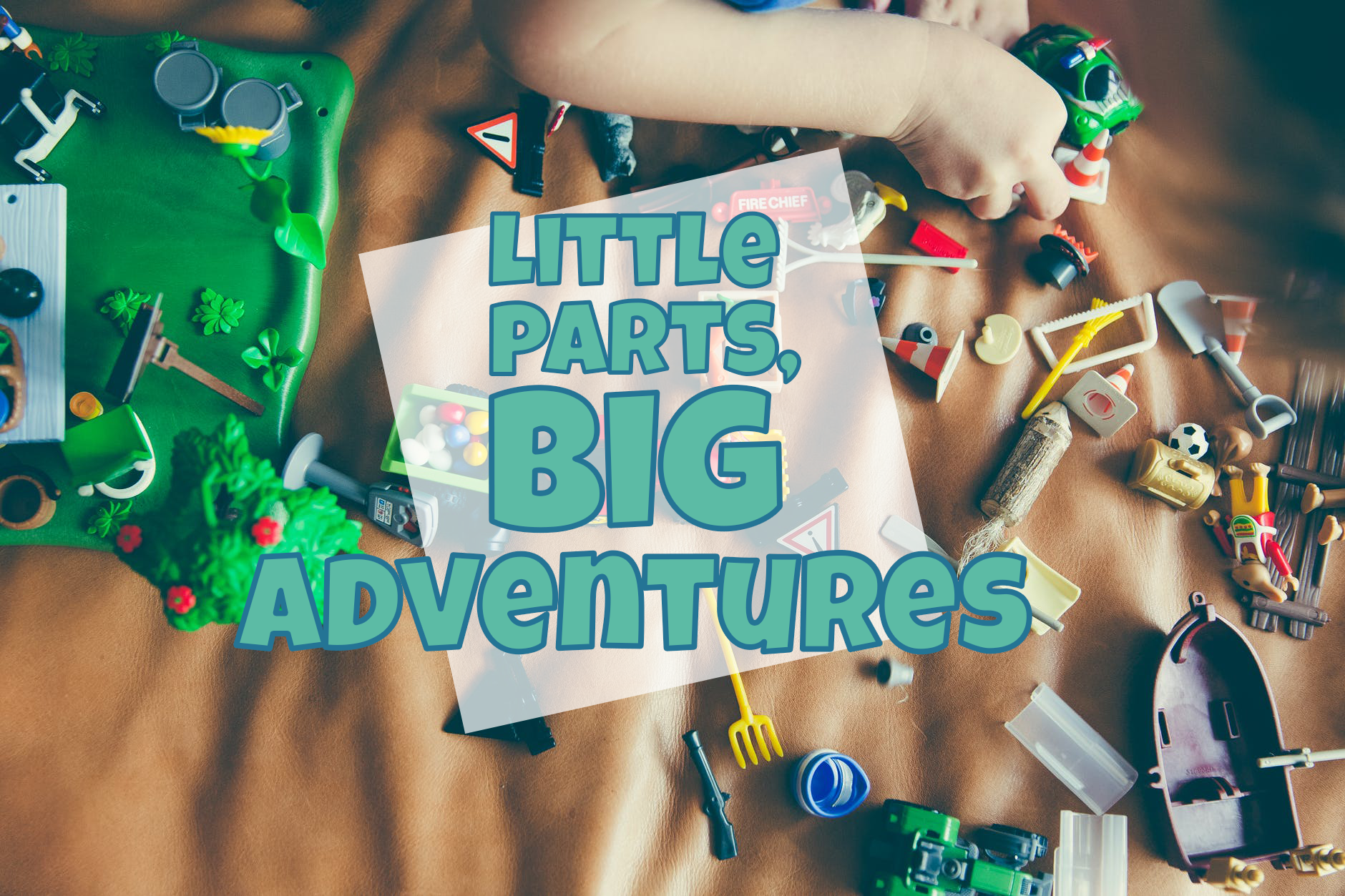Little Parts, Big Adventures!

The theory of Loose Parts has been exciting us as early years practitioners for many years. You may well have noticed the amount of loose parts we have been introducing into the nursery over recent months (if not years!) – but what is loose parts all about and what are the benefits?
Loose parts are items that can be used in a multiple of ways with no pre-designed outcome. Children can combine them, line them up, join them together and transport them. It develops opportunities for creativity, critical thinking and problem-solving as well as providing opportunities for counting and sorting.
It is all about teaching children how to think and not what to think! The possibilities are endless and can be introduced at home.
Here are a few ideas:
1. Imaginative and Pretend Play
It seems obvious that loose parts can add a valuable layer of learning to imaginative play. This can be as simple as introducing some new materials to dressing up, or adding some conkers, pine cones or dried fruit into children’s kitchen play, alongside real equipment, such as mini frying pans, wooden bowls and spoons. Also, sticks, stones, driftwood, shells and flowers can be used to make small world play environments for animals, trains and cars! The more loose parts that are available, the higher the degree of inventiveness.
2. Construction Play
All that recycling that we gather can be used as perfect opportunities to introduce loose parts into construction! Kitchen roll tubes, cardboard boxes, even plastic bottles can be used to make anything and everything children want with a bit of tape and scissors! This is a wonderful opportunity for some joint thinking and time for you to engage with your child’s imagination. Why not create an ‘Engineer’s Box’ full of these types of resources that can come out at playtime?
3. Sensory and Creative Play
Loose parts lend themselves perfectly to be combined with creative thinking. Try introducing beads, buttons, flowers and leaves to playdough, shaving foam or slime. These are also ideal for gluing and sticking special pictures! You may be surprised at just the level of creativity your child comes up with when given the opportunity.
Loose parts will be different for different people depending on where you live and the age of children and can be great opportunities for foraging on the seafront, in parks and even through what is already available at home!
Of course, this doesn’t mean getting rid of those beloved toys that children have but is about extending what they have availability to by introducing those open ended resources. Children will naturally put together loose parts with their own ‘finished’ toys and love the exploration of the two.

